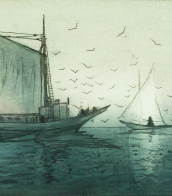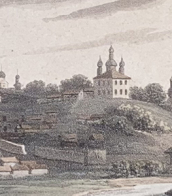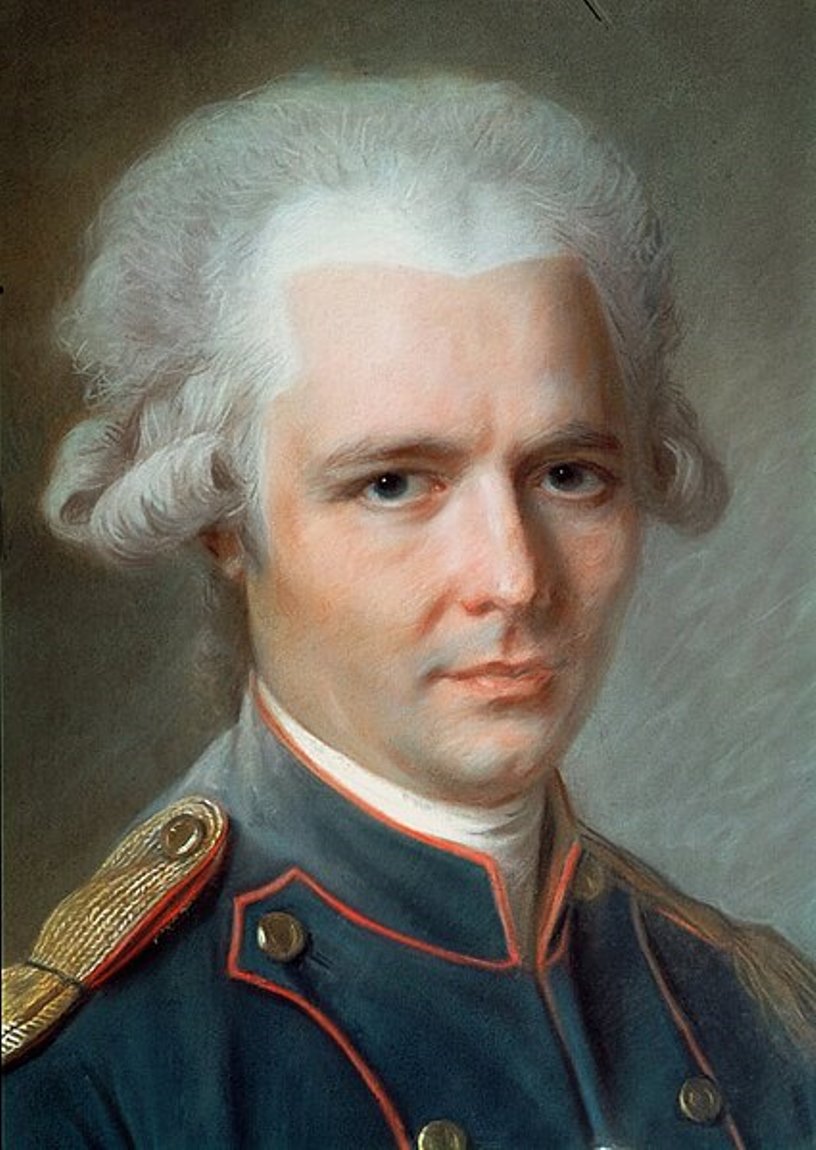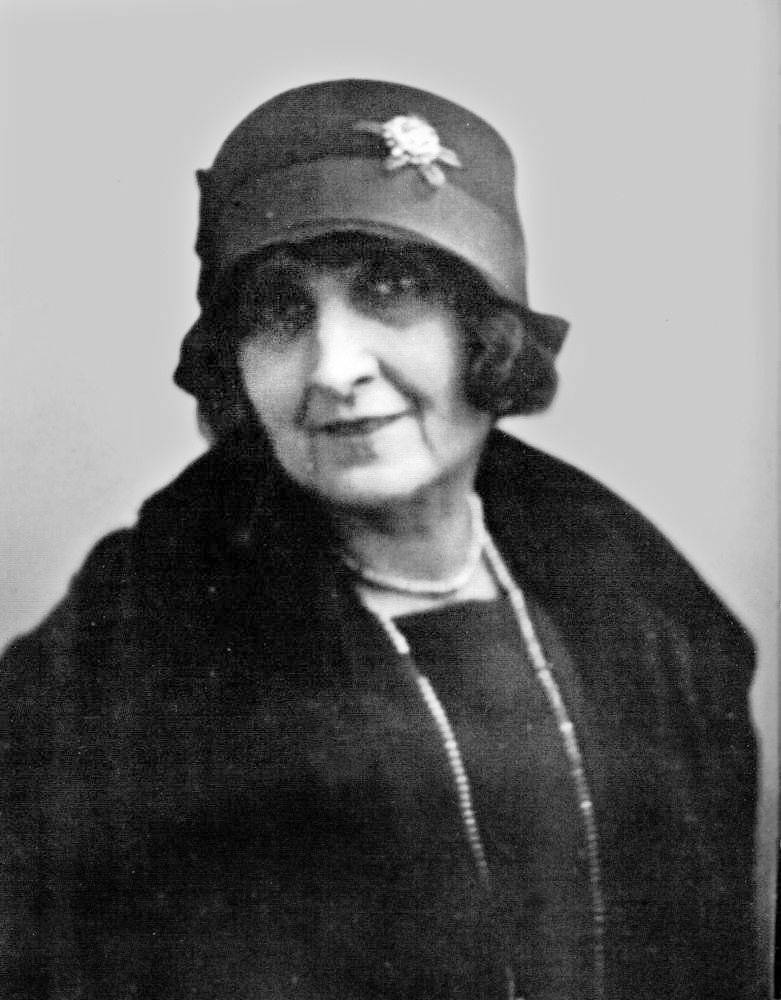левицкий






Dmitry Grigoryevich Levitzky (Russian: Дмитрий Григорьевич Левицкий) was an acclaimed Ukrainian-Russian portrait painter and academician born in May 1735, renowned for his exceptional contributions to the art of the 18th century. Originating from a family deeply rooted in the Ukrainian noble-priestly class, Levitzky's early exposure to art came from his father, Grigory Kirillovich Levitsky, a priest and an enthusiast in painting and engraving. This familial influence laid the foundation for Levitzky's artistic journey, which began in earnest when he assisted the prominent painter Alexey Antropov in Kiev, leading to his eventual move to Saint Petersburg.
Levitzky's rise to fame was marked by his unique ability to capture the essence of his subjects, combining exceptional technique with a fresh approach to portrait painting. His most notable works include portraits of significant figures from the Russian elite, such as Catherine II as the Legislatress in the Temple of the Goddess of Justice and portraits of the Smolny Institute's young ladies. Despite the grandeur and recognition that these works brought him, Levitzky faced financial struggles, spending his final years in poverty, a testament to the often-precarious nature of artistic acclaim.
His legacy, which had waned by the 19th century, was revitalized in the 20th century by art historian Alexander Benois, who positioned Levitzky among the pantheon of European Enlightenment artists. Levitzky's work is celebrated for its technical mastery and unique contribution to Russian and European portraiture, leaving an indelible mark on the artistic landscape of his time.
For collectors and experts in art and antiques, Levitzky's paintings are not just artistic achievements but also historical narratives captured in oil, reflecting the complex socio-cultural dynamics of 18th-century Russia. His portraits, housed in prestigious museums and galleries worldwide, continue to be studied and admired for their elegance, detail, and historical significance.
To stay updated on new findings and auction events related to Dmitry Grigoryevich Levitzky's works, sign up for updates. This subscription will ensure you're informed about sales and auctions where you can acquire pieces by this master portraitist, offering a unique opportunity to own a piece of art history.


Georges Levitsky was a Russian-born bookbinder who worked in Paris in the early 20th century.
In 1907, bookbinder Georges Levitsky emigrated from Odessa to Paris, where he opened his own workshop in 1910. He produced unique, luxurious Art Deco products in limited editions for bibliophiles. Levitsky collaborated with famous artists and illustrators, and his clients included King Albert I of Belgium and King Alexander I of Serbia.

Sylvain Sauvage, born Félix Roy, was a French Impressionist and Modernist painter, illustrator, designer and printmaker.
He studied at the Faculty of Fine Arts in Paris, and after the First World War he took up illustration thanks to the publisher Kieffer, who in 1922 commissioned him to illustrate Voltaire's Ingenue. Sylvain Sauvage subsequently collaborated with Mornay, Jonquière and Crès. In 1925 Sauvage became an independent publisher and was also known as a fine illustrator and technical book specialist. His work was exhibited at the Salon des Artistes-Decorators and he was director of the Ecole dEstienne. Sylvain Sauvage illustrated many books during his career.

Pierre Choderlos de Laclos, full name Pierre Ambroise François Choderlos de Laclos, was a French politician, inventor, military leader, and writer.
De Laclos initially pursued a military career, but soon abandoned it, deciding that he would achieve greater fame by becoming a writer. He wrote poetry, erotic stories. His first novel "Dangerous Liaisons" (Les Liaisons dangereuses, 1782) immediately made a great impression and caused a mixed reaction in society. This is one of the masterpieces of novelistic literature of the XVIII century, which describes the love affairs of the aristocracy. On its motives, a large number of commentaries were later written, plays were staged and movies were filmed.
Later, Pierre Choderlot de Laclos worked for some time as secretary to the Duke of D'Orleans, writing several treatises on military and political topics. And in 1792 he again joined the army, where under Napoleon he rose to the rank of general, participated in the Rhine and Italian campaigns.


Pierre Louÿs, real name Pierre Félix Louis, was a French poet and writer.
He specialized in erotic and ancient themes in the Art Nouveau style. Louÿs's most famous work is The Songs of Bilitis. It is a collection of erotic poetry with strongly lesbian themes, written in the manner of Sappho. Although Louÿs claimed that these poems had a Greek source, this ultimately proved to be a hoax.

Georges Levitsky was a Russian-born bookbinder who worked in Paris in the early 20th century.
In 1907, bookbinder Georges Levitsky emigrated from Odessa to Paris, where he opened his own workshop in 1910. He produced unique, luxurious Art Deco products in limited editions for bibliophiles. Levitsky collaborated with famous artists and illustrators, and his clients included King Albert I of Belgium and King Alexander I of Serbia.

Edouard Chimot was a French Art Deco painter, illustrator and editor.
Edouard studied at the Ecole des Arts Décoratifs in Nice and then at the Ecole des Beaux-Arts in Lille. After the war, he was able to prove himself as an illustrator and master publisher. At the height of the Art Deco heyday, Chimot received a number of commissions to illustrate books with his original engravings, the first of which was the rare book Les Après-Midi de Montmartre with fourteen engravings by Chimot.
In 1920, Édouard Chimot founded his own publishing house, Éditions d'Art Édouard Chimot. Through this venture, he not only continued to create his own art, but also collaborated with other artists and writers to create high quality limited edition books, often with his distinctive illustrations. Édouard Chimot was associated with late Symbolist and decadent culture, and his own work is sometimes referred to as post-Symbolist. His collaborations with famous writers and poets, including Paul Verlaine and Charles Baudelaire, brought his illustrations to the forefront of the Art Nouveau movement.
With the collapse of the financial system in the early 1930s in Europe, the demand for luxury products also fell, but the artist continued to work, produce books and paint. Chimot's artistic style is characterized by sensuality and romanticism. He was an artist of the female figure, style, eroticism and embodied the essence of Art Deco imagery.


Sonia Lewitska (Ukrainian: Sofia Pilipivna Lewitska) was a Ukrainian émigré artist who worked in Paris. She is known for her paintings and drawings in the styles of Cubism and Post-Impressionism with the influence of Ukrainian folk art.



























